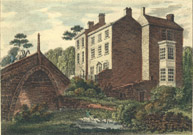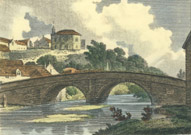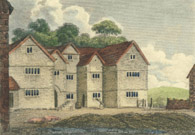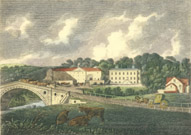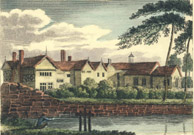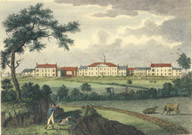Annie Marland
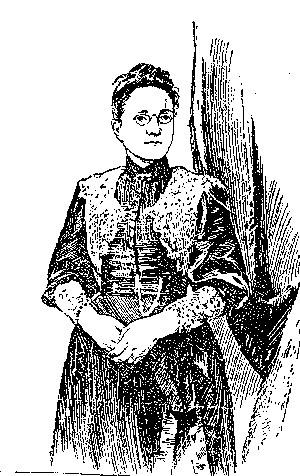
Annie Marland is an elusive figure who I first noticed in the pages of Jutta Schwarzkopf’s Unpicking Gender, a study of women’s work in cotton weaving published in 2004. She was described as a cardroom worker from Mossley with eighteen years experience who had become one of the most popular organisers for the Womens Trade Union League. A further search revealed that she is also mentioned in Jill Liddington and Jill Norris’s pioneering study of women’s suffrage in the cotton districts, One Hand Tied Behind Us (1978), but they do not mention her connection with Mossley.
Jutta Schwarzkopf’s references led me to the British Library Newspaper Library in London where an interview with Annie Marland appears in the New Weekly of 2 February 1895. She had been working for the Womens Trade Union League for three years at that time and was interviewed in the study of Lady Dilke’s house in Sloane Street, London. Lady Dilke was an art historian and president of the Womens Trade Union League, a brief biography of her appears in the Oxford Dictionary of National Biography which can be consulted on the Tameside Libraries website. Annie explained that she had been involved in Liberal politics in Mossley and was secretary of the Women’s Liberal Association there. In 1891 she was sent to London as a delegate to the Women’s Liberal Federation meeting where she spoke up to contradict one of the speakers who said that women should have their own unions separate from men. Annie said that cotton unions were for men and women and were highly successful. As a result Lady Dilke approached her saying ‘she had been looking for me for years’ and asked her to become an organiser for the Womens Trade Union League. There is a report of the Women’s Liberal Federation meeting in the Daily Chronicle of 29 May 1891 but its description is a little different. According to the Chronicle a Mrs McLaren put a resolution that women should be allowed to work in more trades free from government and trade union regulation and Annie spoke against this saying that women workers in cotton were well paid and were freely admitted to the textile trade unions.
Annie told the interviewer from the New Weekly that she had started work in Mossley at the age of ten and she had worked for fifteen years in the same cardroom, unfortunately she did not tell us which one. She was a union member paying a shilling a week and, on average, earned a pound a week. She had to get up at five in the morning for a half hour walk to the mill. When asked if her companions in the mill were ‘pretty rough’ she replied ‘I know thousands of mill girls who are just as chaste and modest as those who judge them without knowledge’. The interviewer asked if she was still a Liberal and she answered that she was strongly in favour of direct Labour representation in Parliament, but that the League did not involve itself with politics, it wanted women of all political backgrounds to join. Her work for the League was speaking to groups of women trying to get them to join unions and for their unions to join the League. She had recently spent ten weeks in the West Riding talking to groups and explained that womens trade unions were much further advanced in the north. She was a great advocate of men and women being in the same union, she said:
There is a tendency for women to lag behind – get out of the running, as it were. In men’s unions they get dragged on. Men are more business-like than women; they have had more experience. The women learn here again. Next day they talk together in the factory over the affairs of last night’s meeting. It greatly widens the woman’s outlook; they learn to give and take. And there are advantages to men too. The women are more economical in management, often very serviceable on committee. We make a point of getting them to serve; it is an education in itself. Many of them, who never spoke a word in public before, find they can make neat little speeches. It increases their self-respect, takes away from the absurd diffidence many capable women have.
Annie obviously felt her opinion was as good as anyone’s so she may have undervalued some of the advantages of women only organisations. She also believed that men were happily welcoming women into the unions to help reduce the use of female and child labour to undercut men – she accepted that men should have priority and that married women should not work if possible.
In 1903 the Cotton Factory Times reported on one of Annie’s articles in the Women’s Trades Union Review where she discussed the evil of “driving”, a process whereby the overlooker used the most productive worker as an example to “drive” the others to reach her output. This was done by putting the names on a slate. Annie felt that the weavers’ and the overlookers’ unions should oppose this and the employers should also try to stop it. In this article she also advocated the abolition of piece rates in weaving but the Cotton Factory Times noted that many weavers would disagree.
In 1895 Annie married Robert Brodie, a Scot, in Ashton and in 1901 they were living in East Ham in London. Although they had a three year old son, named Roy, Annie had not given up her work, she was described as a trade union lecturer and her husband as a journalist. By 1911 they had moved out to Essex, they still only had the one child but Annie had given up work and Robert was an auctioneer and estate agent.
Copies of the interview with Annie from the New Weekly can be consulted at the Local Studies and Archives Centre in Ashton along with microfilm copies of the Womens Trade Union League papers, a valuable source for womens work in the cotton towns and for further details about Annie Marland. We hope that users of the Local Studies and Archives Centre will be tempted to find out more.
Alice Lock - Tameside Local Studies and Archives Centre © 2011
Click here to print or download a copy of this article
Back to Articles

